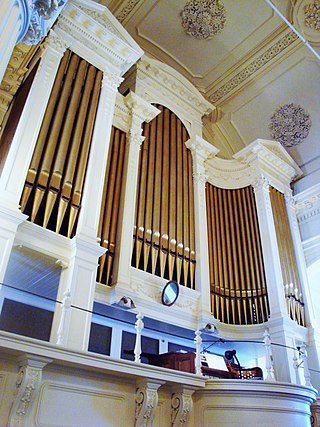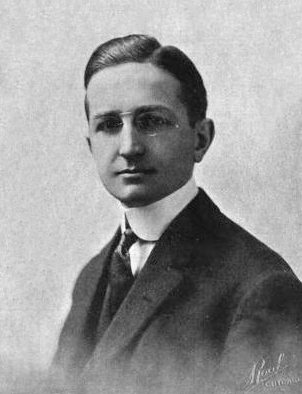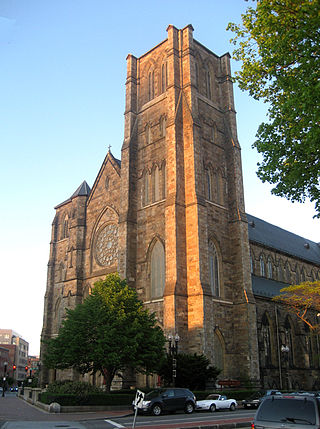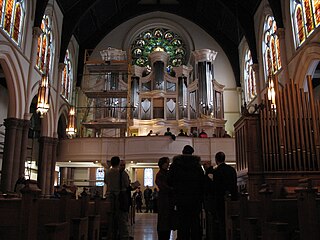
Æolian-Skinner Organ Company, Inc. of Boston, Massachusetts was an American builder of a large number of pipe organs from its inception as the Skinner Organ Company in 1901 until its closure in 1972. Key figures were Ernest M. Skinner (1866–1960), Arthur Hudson Marks (1875–1939), Joseph Silver Whiteford (1921-1978), and G. Donald Harrison (1889–1956). The company was formed from the merger of the Skinner Organ Company and the pipe organ division of the Æolian Company in 1932.

Casavant Frères is a Canadian organ building company in Saint-Hyacinthe, Quebec, which has been building pipe organs since 1879. As of 2014, the company has produced more than 3,900 organs.

Ernest Martin Skinner was an American pipe organ builder. His electro-pneumatic switching systems advanced the technology of organ building in the first part of the 20th century.
Mathias Peter Møller, commonly known as M.P. Möller or Moeller, was a prolific pipe-organ builder and businessman. A native of the Danish island of Bornholm, he emigrated to the United States in 1872 and founded the M.P. Moller Pipe Organ Company in Greencastle, Pennsylvania, in 1875. The city of Hagerstown, Maryland, took notice of Möller's early successes and induced him to move his business there in 1881 to help make it a viable business center in Western Maryland. The company remained in business in Hagerstown. until 1992, with hundreds of employees at its peak and a lifetime production of over 12,000 instruments.

Austin Organs, Inc., is a manufacturer of pipe organs based in Hartford, Connecticut. The company is one of the oldest continuously-operating organ manufacturers in the United States. The first instruments were built in 1893 with the Austin Patent Airchest, and many remain in fine playing condition to this day.

The Cathedral of the Holy Cross is the cathedral of the Roman Catholic Archdiocese of Boston and is the largest Roman Catholic church in New England.

EROI or the Eastman Rochester Organ Initiative is a project run by the Eastman School of Music with the goal of creating a unique collection of organ instruments in Rochester, New York.
Brighton and Hove has numerous notable pipe organs, from the small early 19th-century organs to the large 20th-century instruments in the large churches.

Unitarian Memorial Church is a historic church on 102 Green Street in Fairhaven, Massachusetts, home to the Unitarian Universalist Society of Fairhaven.
The William A. Johnson Organ Company of Westfield, Massachusetts, which later became Johnson & Son Organ Company, was a highly respected firm that built 860 pipe organs throughout the United States and in Canada and Bermuda. The company operated from 1844 through 1898. All Johnson organs were completely mechanical organs, with Barker lever tracker-pneumatic actions utilized in larger organs after 1871.

Josiah Leavitt (1744–1804) was an early Massachusetts physician and inventor. Possessed of an early love for mechanical movements and for music, Dr. Leavitt eventually gave up his medical practice and moved to Boston, where he became one of the earliest manufacturers of pipe organs in the United States.

Trinity United Methodist Church is located in Des Moines, Iowa, United States. It was listed on the National Register of Historic Places in 1998 as Trinity Methodist Episcopal Church, which was its previous name.

Holy Name Church in West Roxbury is a Roman Catholic church of the Archdiocese of Boston.

Olympic Organ Builders was an importer and custom fabricator of tracker action pipe organs in Seattle, Washington from 1962 through the 1970s. The company built approximately 25 organs for churches and schools located the Puget Sound and Eugene Oregon in the period from 1967 through 1970.

St. Matthew's Cathedral is an Episcopal cathedral located in Laramie, Wyoming, United States. It is the seat of the Diocese of Wyoming. The cathedral is a contributing property in the St. Matthew's Cathedral Close, a historic district listed on the National Register of Historic Places.

The Church of St. John the Evangelist is a parish of the Roman Catholic Church in the City of Orange Township, Essex County, New Jersey, within the Archdiocese of Newark. It is noted for its Gothic Revival style church (building), a prominent local landmark located at 94 Ridge Street.

Hinners Organ Company was an American manufacturer of reed and pipe organs located in Pekin, Illinois. Established in 1879 by German-American John Hinners, the firm grew through several partners, becoming Hinners & Fink in 1881, Hinners & Albertsen in 1886, and Hinners Organ Company in 1902. In the 1920s Hinners established a subsidiary, the Illinois Organ Supply Company, which mass-produced parts for Hinners and other firms. Business declined in the 1930s due to the Great Depression, changing technology, and increasing competition. Hinners became a service company in 1936 and closed in 1942.
The Positive Organ Company was an English pipe organ maker, established in London in 1898 by Thomas Casson, although with some earlier antecedents. The firm was best known for small, one-manual organs, which were able to be moved about. It ceased trading in 1941, but the name was revived in 2020 with a new, unrelated organ builder.
Charles Brenton Fisk was an American pipe organ builder who was one of the first to use mechanical tracker actions, instead of electro-pneumatic actions, in modern organ construction. Originally involved in the Manhattan Project, Fisk made a career change from atomic physics to organ building. He later co-founded C.B. Fisk, Inc., a firm that has built many respected organs worldwide.















